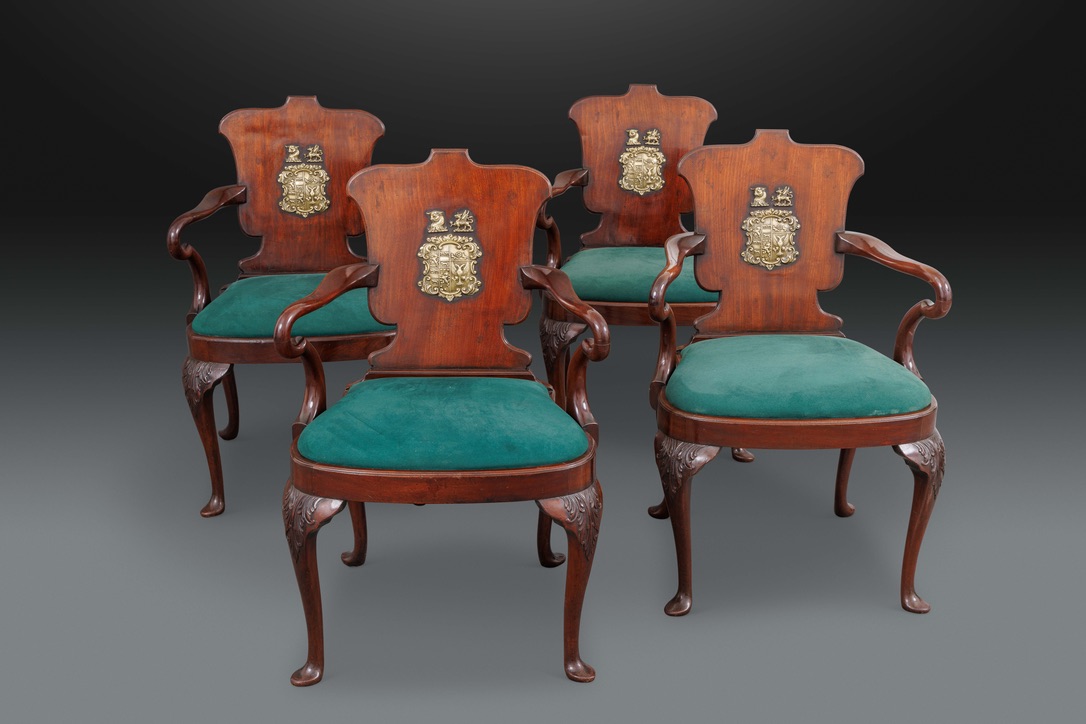
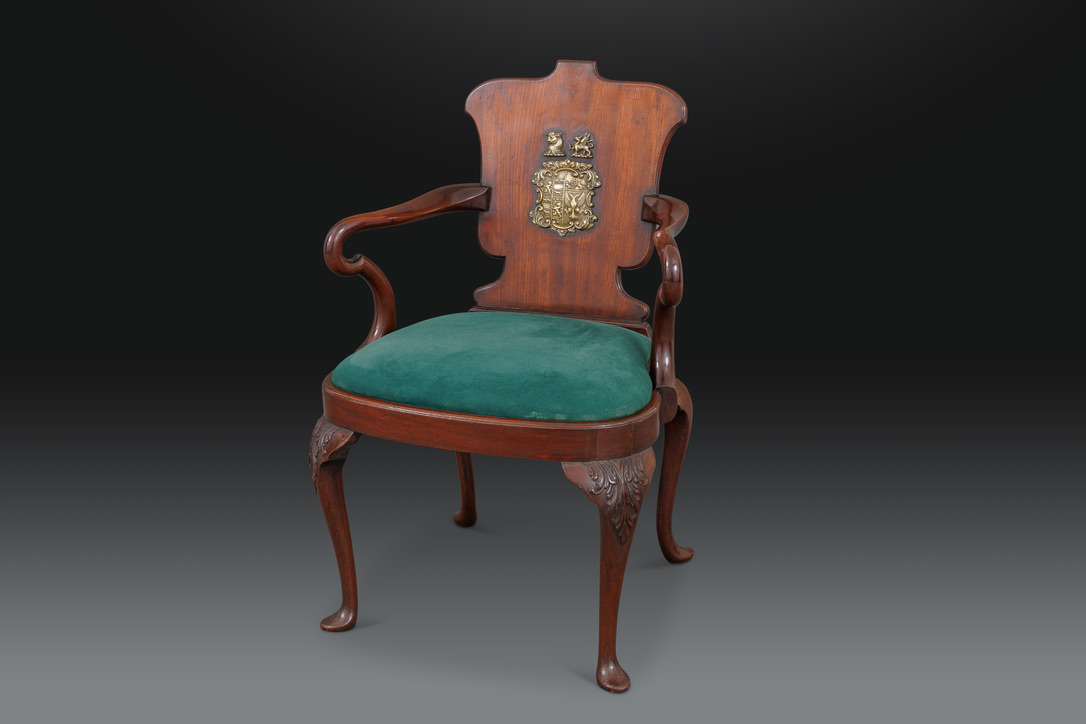
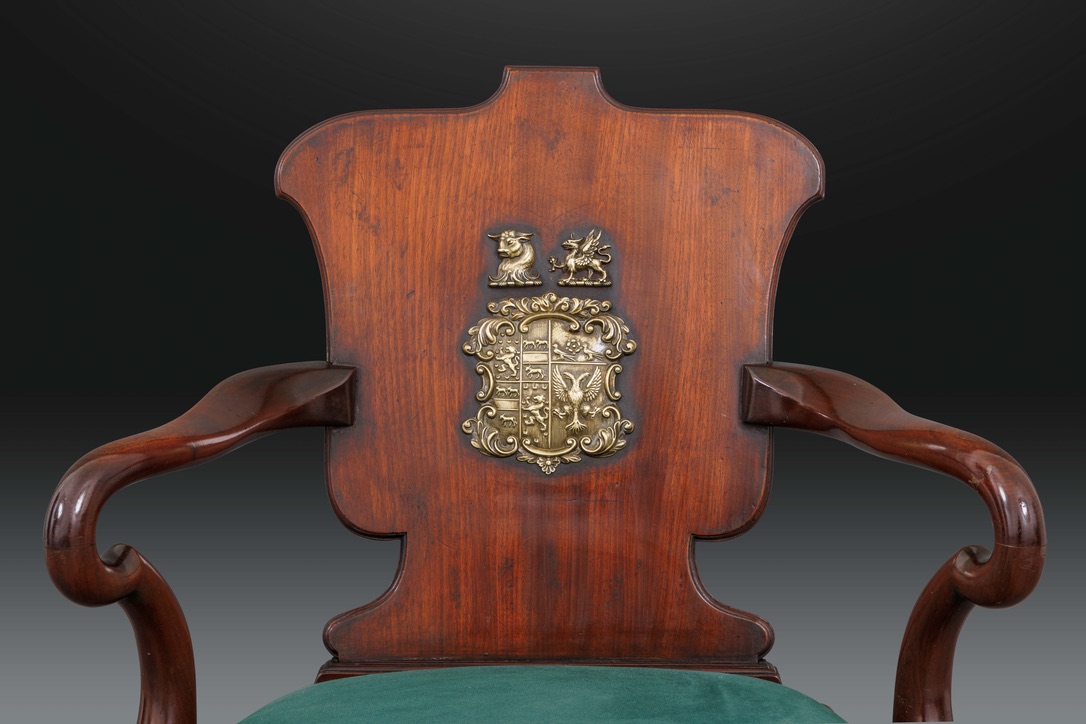
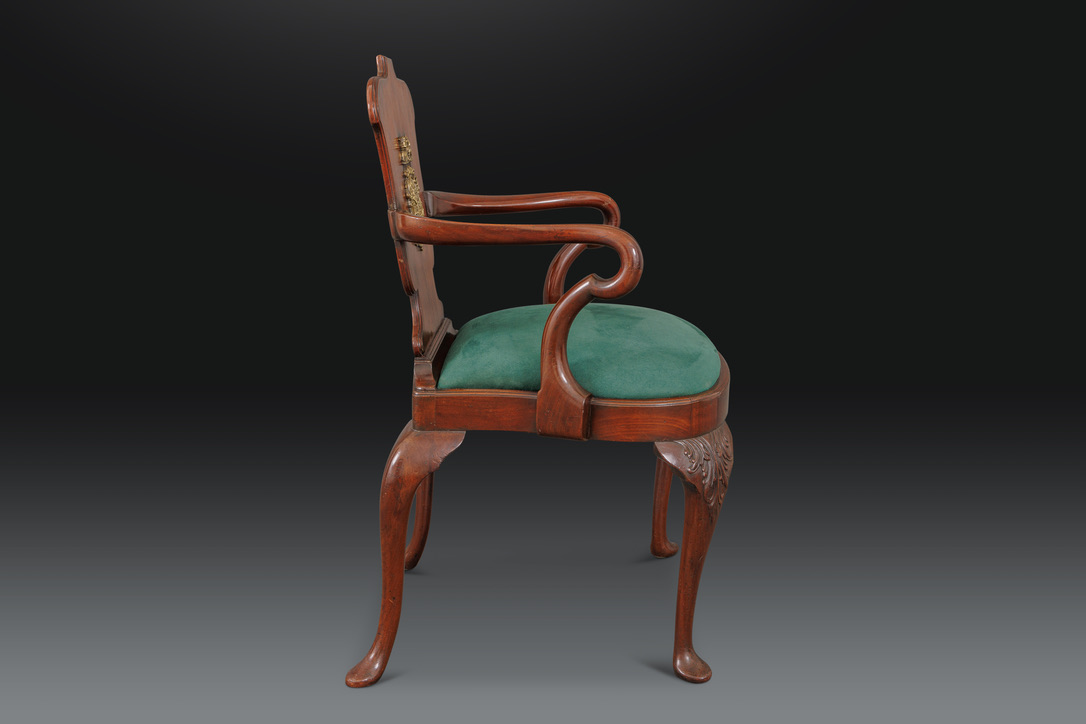
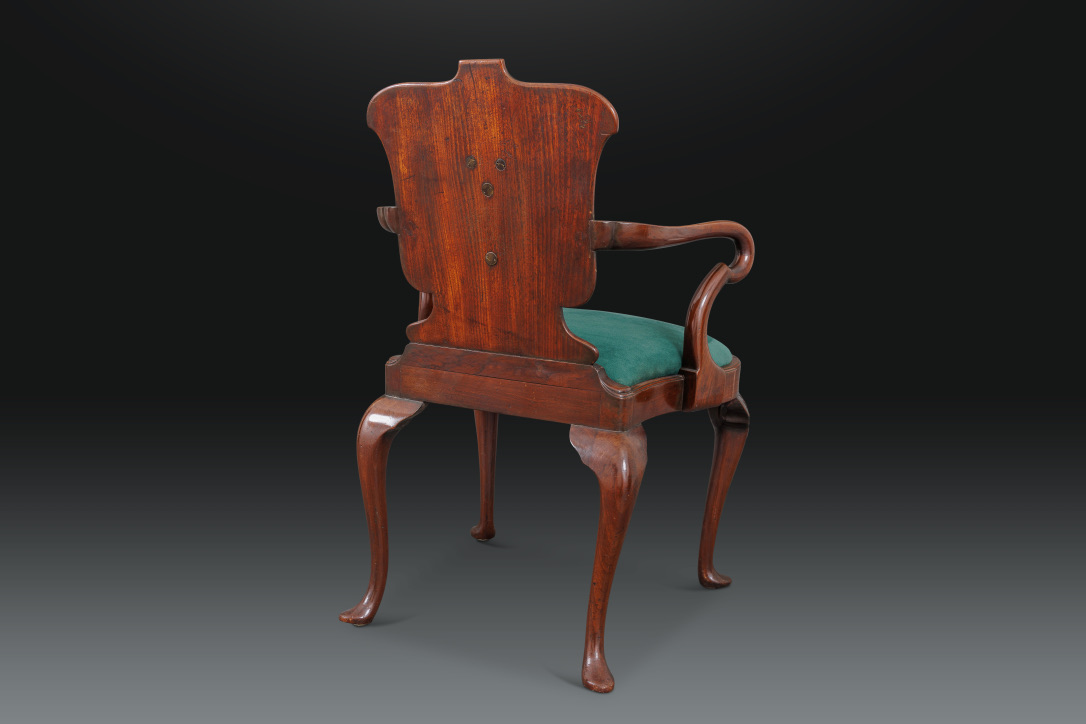
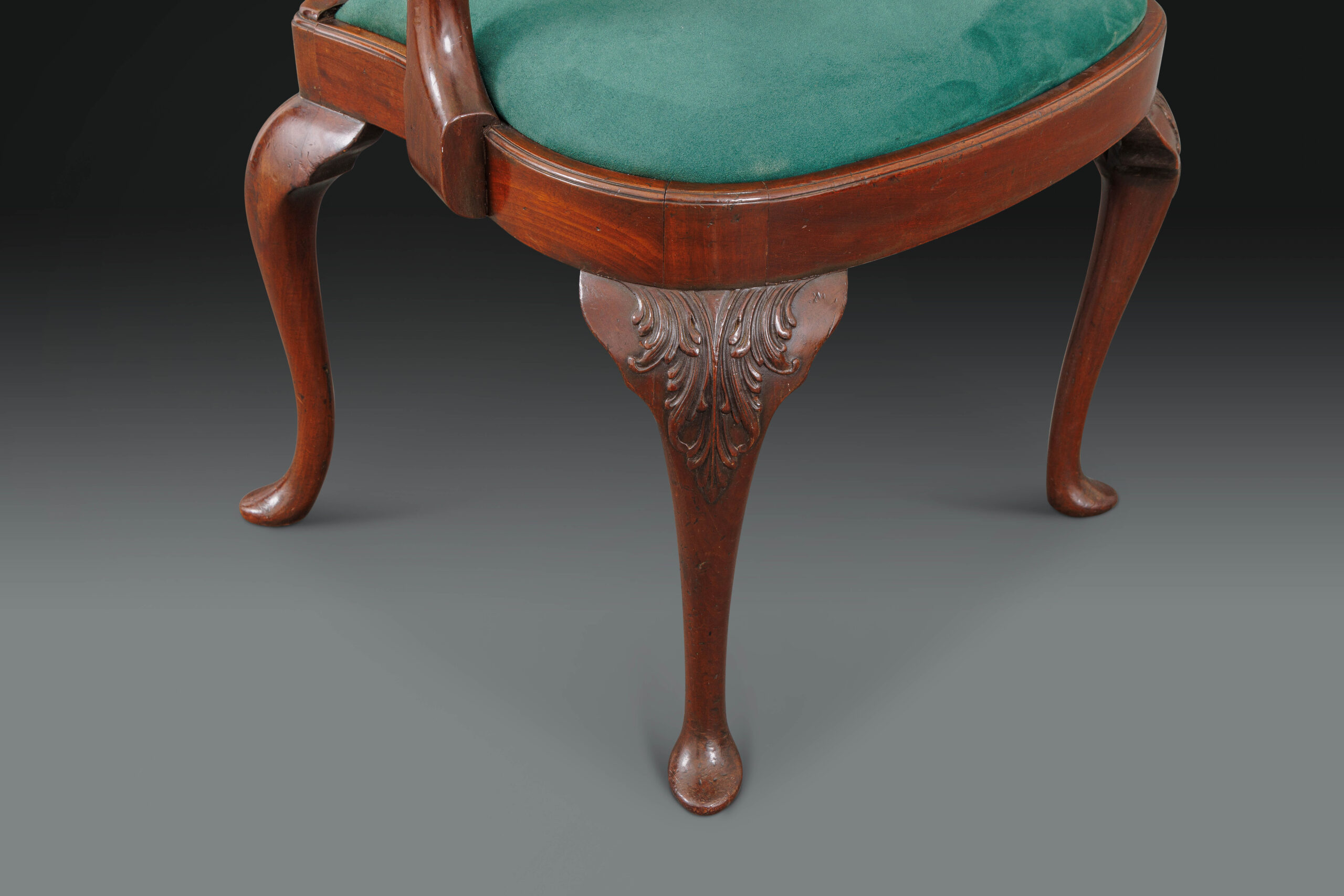
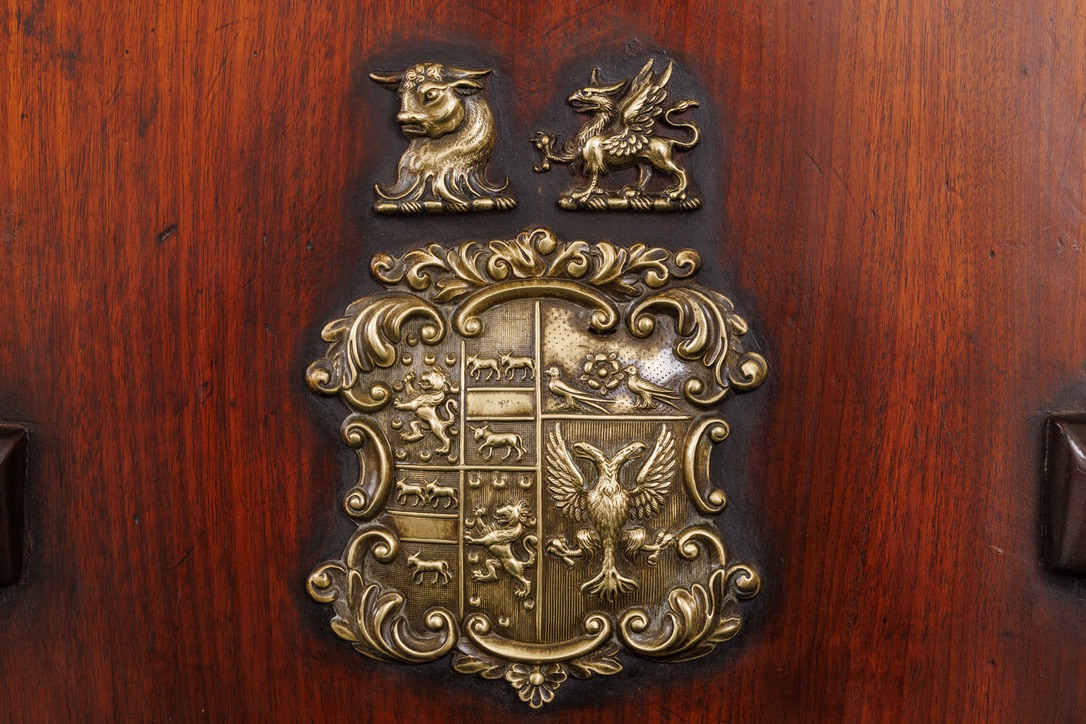
$38,000.00
For questions regarding viewing, shipping, and anything else,
contact us at: [email protected]
Provenance
Thomas Wentworth Beaumont (1792-1848) presumably for Bywell Hall or Bretton Hall
Although chairs with armorial decoration are not particularly unusual, those incorporating cast bronze heraldic devices are extremely rare. The form of the chairs with their escutcheon form backs and made from the finest quality mahogany suggest a maker of the quality of Gillows of Lancaster and London. This seems all the more likely given that the Beaumont family are recorded in the Gillows Estimate Books on various occasions and were clearly good clients of the firm as is demonstrated by large payments to the firm in the family accounts including £494 on the 30th of June 1827.
Interestingly the Gillows firm seems to have had particular links with major Catholic families with many of the most prominent English catholic dynasties being repeat clients. Although the Beaumont family were not Catholic, Thomas Wentworth Beaumont did support Catholic emancipation as an MP in the 1820s-around the time the chairs were commissioned-and it is tempting to think that he may have decided to order through Gillows not just because of a family history with the firm but also because of the influence of the many prominent Catholic landowning families in the North of England with whom Beaumont would have socialised.
This type of chair was something of a speciality for the firm, with examples first being made by Gillows in the mid 18th century, and it continued in popularity in to the 19th century with certain clients appreciating its “antiquarian” connotations. The shepherd’s crook arms hark back to chairs made in the 1730s-1750s as do the rounded front rails.
The Arms on the Chairs

The bronze plaques on the chairs show the arms of Beaumont quartered by Ayscough impaling those of Atkinson. Heraldic conventions normally mean that impaled arms only display one crest. In this case this convention has not been followed. The bull crest on the dexter side is for Beaumont and it is likely that the griffin crest on the sinister is for Ayscough. A famous service of Worcester porcelain decorated by the James Giles workshop with the arms of Beaumont with Ayscough in pretence is in many famous collections of English porcelain.

The bronze plaques on the chairs are so well-conceived and cast that the colour information for the coat of arms is perfectly readable-the vertical lines behind the lion rampant indicating gules (red) for example. It is very clear that no expense was spared in the making of this set of chairs. It is therefore probably not surprising to learn that at the time of his mother’s death in 1831, Beaumont was apparently the richest commoner in England.
Thomas Wentworth Beaumont
Thomas Wentworth Beaumont was a lieutenant-colonel in the Northumberland Militia until his resignation in 1824. He fought a famous duel against the future 1st Earl of Durham in 1826. His hobbies included yachting-he was a member of the Royal Yacht Squadron. He was also a member of the Literary Association of the Friends of Poland-an association formed to encourage British and Polish co-operation. Like his father before him, Beaumont served as MP for Northumberland. In 1827 Beaumont married Henrietta Jane Emma Hawks Atkinson and these chairs were presumably made to commemorate what turned out to be a successful union that produced 6 children.
Research and Essay by Christopher Coles.